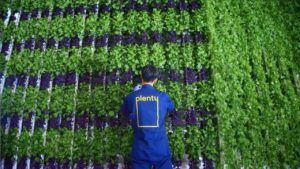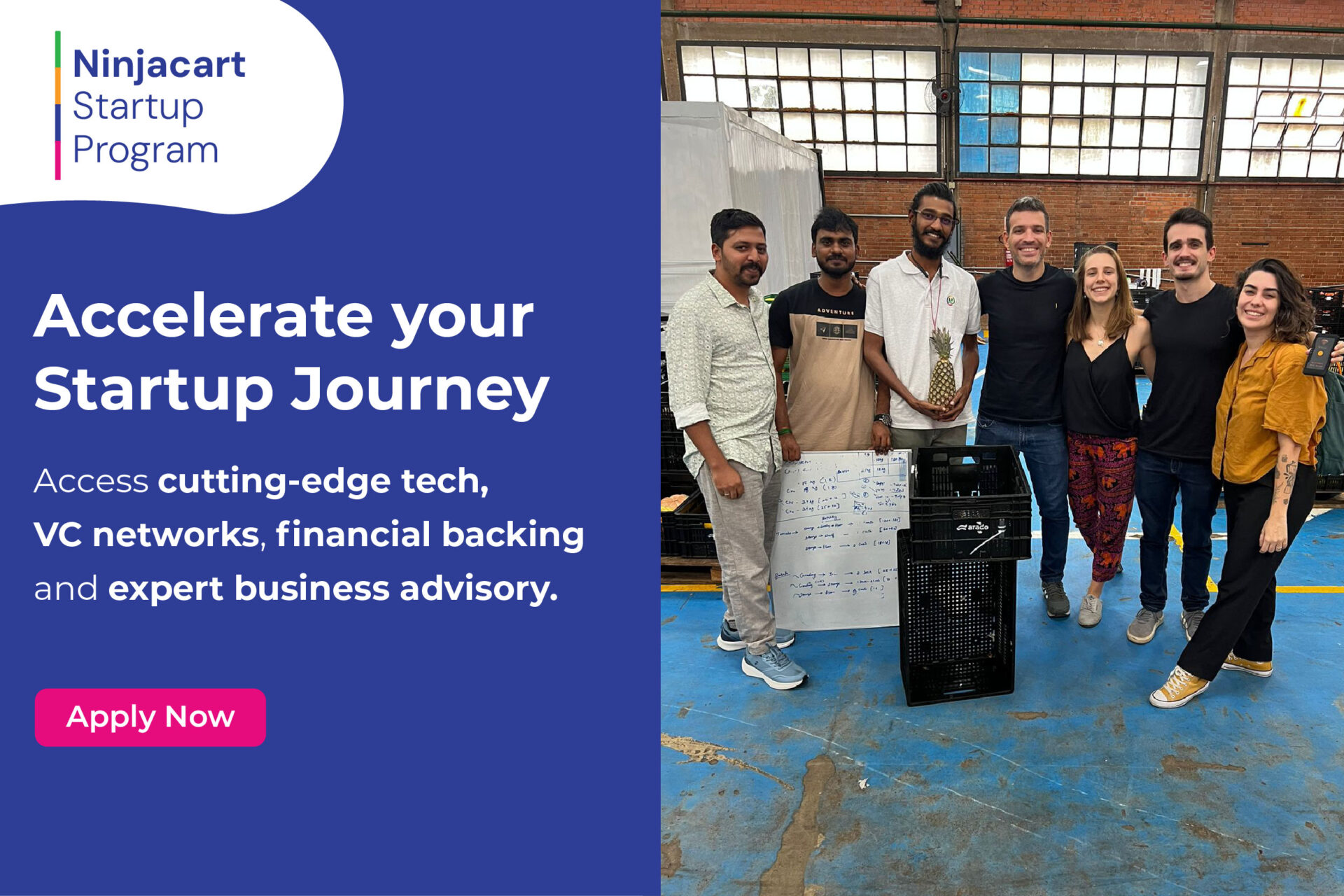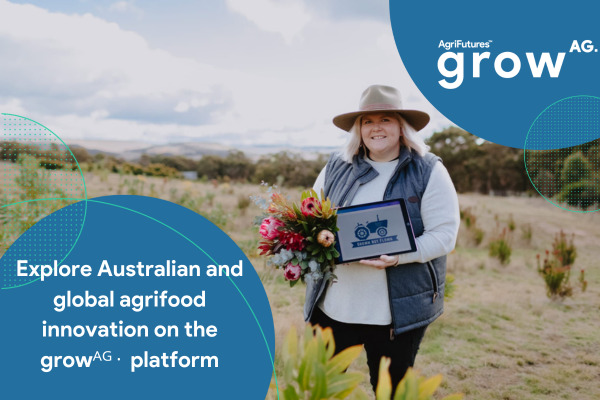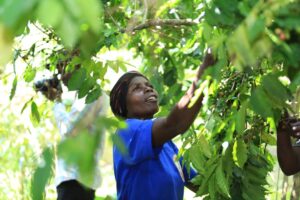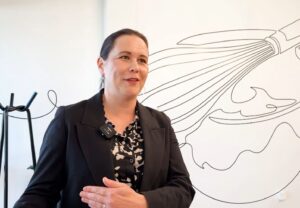This interview is part of a series on agrifoodtech corporate VC investment strategies and insights. The series is produced in collaboration with the OnRamp Agriculture Conference, which brings together the agriculture and food industries’ leading corporations, investors, and startups to highlight innovations disrupting agriculture and the future of food. Sign up now to receive the forthcoming report on corporate VC strategies in Q1 2021. Previous CVC interviews in the series have featured Syngenta Ventures, Leaps by Bayer, Cargill and BASF Venture Capital.
Victoria de la Huerga knows a thing or two about transitioning from life at a young company to a corporate career. She held various strategic roles at natural ingredients company WILD Flavors before it was acquired by Archer-Daniels-Midland (ADM) in 2014. Two years later, de la Huerga was made vice president of the U.S. agrifood giant’s venture investing group, ADM Ventures. (The corporate world wasn’t completely unfamiliar: she previously worked for PepsiCo.)
Having the unique experience of being acquired by the very corporation for which she now leads venture investing has certainly shaped de la Huerga’s approach at ADM Ventures—and the numerous ways the group invests in and partners with agrifood innovators. Her work at WILD Flavors, has too: she says the company was a “silent partner” in helping many young food and beverage companies formulate products and bring their ideas to life.
AFN spoke to de la Huerga about ADM Ventures’ investment priorities and how the four-year-old corporate venture group is building capacity for the next generation of agrifood technologies.
AFN: You have a unique perspective on corporate venture capital because you were part of a private company that was acquired by a corporation—by ADM.
Victoria de la Huerga: It did give me an interesting and unique experience. I spent a lot of time working with start-ups when I was with WILD Flavors. Now, at ADM, when we look at a startup opportunity, before we ever invest, we’re engaging other parts of the ADM organization that can help us assess the opportunity and go through the due diligence process. Anybody who is considering being in a corporate venture capital team needs to understand the importance of building a network internally, as well as building one externally. You have to like networking and connecting with people, as well as thinking about the possibilities of what a technology could do.
AFN: ADM Ventures in its current form has been up and running for just over four years. Share a bit about ADM Ventures’ approach to corporate venturing then.
We have a hybrid model that we use within our corporate venture capital team. We certainly do the more traditional side of venturing, which is looking outside of our four walls to interesting startup companies that are solving real problems in the world. We also incubate ideas within ADM—those could be new product development initiatives, new business models, or new business opportunities for ADM.
And we also invest in funds as limited partners.
Our focus is on human and animal nutrition and sustainable materials. When we invest in startups, we typically like to come in as a minority investor at the Series A level. We invest quite a bit earlier than a lot of others, and we’re looking for more than a cool idea—we like to see that they’ve been able to figure out how to do it in a lab at least.
In all, we probably have about eight or so direct investments, and we’re LPs in several venture capital funds, as well as numerous collaborations.
AFN: Is ADM Ventures a formal investment fund within ADM?
We do not have a formal fund.
AFN: For your direct investments, you mentioned taking a minority stake—but does ADM Ventures aim to also be strategic partners, or just financial backers?
Usually startups are coming to us for more than just the money. There are a lot of venture capital firms and family offices that are more than willing to invest money. With us, they’re interested in our expertise too. Or pilot equipment. Or commercial reach. Or manufacturing assets. So we think about how do we help de-risk what they’re doing, and are there competencies that make this a good partnership at the end of the day? We build a business case for each investment that we do.
While we invest directly, we also play matchmaker with our commercial teams across ADM, identifying partnership opportunities. Those may or may not include a capital investment. For example, there could be a unique opportunity for our commercial team to provide ingredients to a startup in the more traditional business-to-business manner. It could be a manufacturing agreement that makes sense for both companies. So even if we’re not doing a direct investment for equity, we consider multiple models.
AFN: Let’s come back to your own experience working with a company that was acquired by ADM. What have you learned from that experience that has shaped your approach on the ADM Ventures team?
Many corporate venture groups lever somebody that works for the company to lead their group, because there is understanding about the company and they likely have a good network within the company already.
There’s also an advantage of balancing that by bringing people in from the outside as well. This is a very relationship-oriented ecosystem, and you need people with good external networks.
AFN: Let’s dig into ADM Ventures’ investment themes. You mentioned animal and human health and nutrition, and also sustainable ingredients.
These areas of focus are very intentional—they are at the core of what ADM does. We play a very important role in the global food system—we’re one of the largest originators, processors and transporters of plant-based materials. We work closely with farmers all the way to companies providing human and animal nutrition products for consumers.
AFN: How do these issue areas square with the needs of the global food system right now?
The Covid-19 pandemic really made us and everyone think about food security in a different way than before. Food security took on a whole new level of importance. People were worried about getting enough pasta, or cereal or other packaged foods—they were concerned that global logistics systems would get shut down.
We’re a company that provides materials that largely come from North and South America and Europe, which are generally are net exporters of feed-grain products to areas of deficit, like Asia, Middle East or Africa. Countries in these regions depend on imports to feed people, so we take very seriously our role in enabling that.
Also, consumers became even more concerned about staying healthy during Covid-19 and purchased products that could enhance their health and continue to do so now.
Our thesis with ADM Ventures builds on this by leveraging what nature provides through new technologies.
AFN: Do you have an example or two in mind of companies you’ve invested in that are supporting this thesis?
When we formed ADM Ventures, one of the first areas that we looked into was alternative proteins.
Actually, ADM has been participating in plant-based proteins for years—we actually invented a texturized vegetable protein back in the late 1960s, early-1970s and were one of the first pioneers of veggie burgers. We were one of the first to sell one directly through retailers. It was a very entrepreneurial way of thinking back in the 70s! So, alternative proteins are an obvious thing for to take a peek at.
On the venturing side, we aren’t as focused on plant-based because ADM has a whole group of people that focused on that. We’re focused on what’s coming after plants—companies that are leveraging fermentation to create alternatives to animal-derived proteins. Insects as a protein source. Algae, though that has been out there for a while.
We made some very early investments in the space, each one using a slightly different methodology and addressing a different need in the world.
One of them is Perfect Day, which is creating dairy-derived proteins without animals. We also invested in Geltor, which is making animal-free collagen and gelatin products. And the third one is Nature’s Fynd. They are leveraging fungal sources to create a high-quality protein and fiber products.
Our more recent investments include Air Protein and Future Meat Technologies.
AFN: How are you working with these companies as a strategic investor?
Well, all of these companies are using a form of fermentation to get to their end results, and ADM has been leveraging fermentation to create products for years, so we know a thing or two about fermentation. We’ve got very deep technical understanding, and we’ve also got pilot assets and large-scale assets that these companies don’t. So, there is an opportunity to help them get to market in a low-capex way.
These companies are exciting to us, and we feel we can engage with them to help them diversify their opportunities. Our type of venture capital fund plays a key role in advancing technologies in the agrifood ecosystem that goes way beyond the money.
AFN: Expand on that, because the agrifood industry—and particularly the larger industry players—has this reputation for being slow to develop and adopt new technology. How do you see corporate venture funds playing a role in shifting that narrative—and that reality, actually?
When you compare the ag industry to, say, the tech industry, the ag industry has to do a lot of things to catch up. But what we’ve seen is, there’s been so much more advancement in agriculture in the last five years than in the last 50.
If you’re a company leveraging CRISPR to improve crop yields or resistance to pesticides, you don’t get results overnight. You try one field plot, then you have to wait a year to do more testing, then you wait again to test in larger field plots to make sure that whatever developing really works. And then, you have to find a whole chain of people in the value stream to enable it to work. It takes time.
Even in food, you could say, “Well, how hard is it to develop a new drink or a new food product?” It’s not so easy, and then once you have it you’ve got to build traction with consumers, and get them to want to buy it more than once.
On the corporate venture side, you need to bring on people who are naturally curious about possibility. This is how you change the paradigm that exists.



